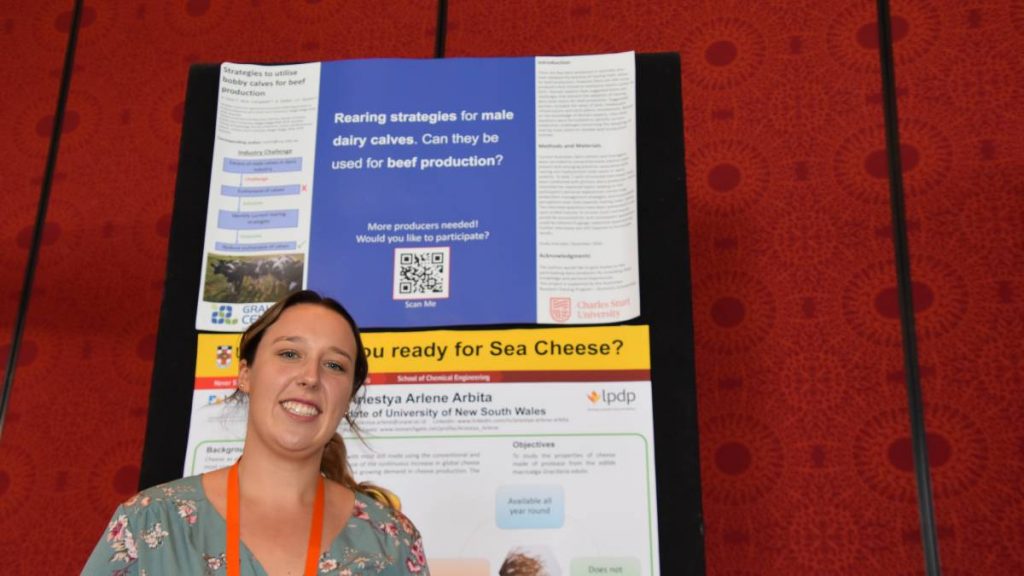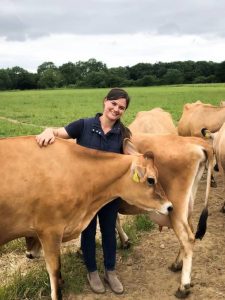
Research by Charles Sturt University student Veronika Vicic aims to understand the current barriers for dairy beef production to provide information to develop an economically viable supply chain.}
The case for change
Demand from consumers for higher welfare and more sustainably produced food is driving agricultural industries to change their practices.
The dairy industry has seen increased scrutiny from animal welfare groups regarding the treatment of male calves.
Australia is in the minority of developed countries internationally that still view the practice of slaughtering dairy bull calves as being more profitable than rearing them for meat production. For this to change, the industry needs to develop pathways to grow male calves to sizable steers suitable for quality beef production.
In Australia, dairy-influenced steers have been shown to receive discounts at abattoirs, commonly due to poor meat quality. This, in turn, reduces the economic viability of producing these animals.
The consistently low-quality result among dairy bred steers is believed to be linked to the type of growth path they have experienced throughout their lifespan. Some overseas markets boast profitable systems that are based on high energy diets.
It is estimated 40 per cent of cattle in American feedlots have Holstein influence and the meat quality from these steers has shown to perform on par, if not greater, with other beef bred animals.
Success stories overseas raises the question – why can’t we achieve this in Australia, and why has this practice not already been adopted?
Barriers to adoption
There is a lack of detailed knowledge about the production constraints faced by dairy farmers when rearing and/or growing out male calves for beef production in Australia.
The research involves interviewing dairy farmers to gain knowledge about current practice and potential barriers to the adoption of a system like seen overseas.
Interviews will be held across different dairy regions to determine if production challenges are the same or differ, within regions. The interviews will also be able to identify if farmers will be willing to adopt new practices into a dairy system, to help the production of dairy-beef based on economic gain.
Through the success stories of some producers the research aims to establish a platform that will give producers a better understanding of how to integrate successful production practices on dairy farms in order to rear male calves for beef production. It will provide viable strategies to assist management and develop profitable business structures surrounding male calf production.
The study is expected to be completed by December 2020.
For a dairy-beef supply chain to be established in Australia, it would need to be able to withstand the market trends surrounding supply and demand. Sensitivity to beef prices at a given time may influence viability, hence the need to investigate potential barriers.
Perceived high-cost requirements of rearing and producing male calves on high-growth diets in Australia may be offset by targeting a premium beef market. This can be achieved if Australian producers are able to follow an optimum growth path and produce a consistent high-quality product.
The study is being conducted under the supervision of Associate Professor Jane Quinn, Professor Anthony Saliba and Dr Michael Campbell at Charles Sturt University and the Graham Centre for Agricultural Innovation, an alliance between Charles Sturt and the NSW Department of Primary Industries (DPI). The research is being funded by the Australian Research Training Program Scholarship awarded to Ms Vicic.
*Veronika Vicic was part of the Australian Dairy Conference’s Young Dairy Scientist Award competition. This is an edited version of the article she submitted as part of that competition.
























